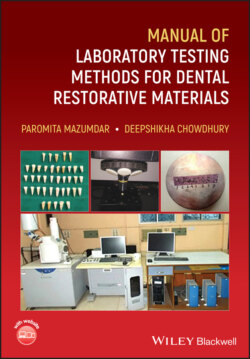Читать книгу Manual of Laboratory Testing Methods for Dental Restorative Materials - Paromita Mazumdar - Страница 22
1.8 Fracture Toughness
ОглавлениеFracture toughness determines the resistance of a material to the propagation of a crack. This test has been considered to be efficient given that other parameters can be derived from it. It should be kept in mind, however, that fracture toughness measures the failure of a material after one continuous period of loading, whereas fatigue strength experiments measure crack propagation after repeated applications of a small cyclic load. A UTM (Instron) is used to apply a central load to the specimen in a three‐point bending mode at a cross‐head speed of 0.125 mm/minute. Fracture of the specimen is identified by a sudden drop in load during the test. Visual examination of the fractured parts is performed to ensure that the fracture plane is through the notch, and that it is perpendicular to the vertical and horizontal planes through the center of the specimens.
The fracture toughness was then calculated by:
(1.2)
The variables are defined as: Kic is the stress intensity factor, P is the load at fracture, L is the span, distance between the supports, w is the width of the specimen, b is the thickness of the specimen, and a is the crack length.
